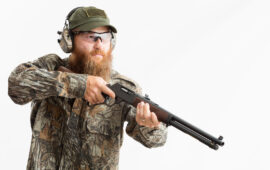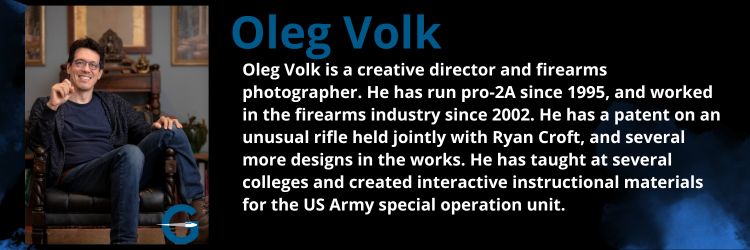
3 Hearing Protection Tips to Use at a Shooting Range
The dangers of gunfire to human hearing are well known. Constant exposure, even to moderately loud noises, reduces hearing acuity. Traumatically loud noise also causes tinnitus, a constant parasitic sound signal fed to the brain by damaged nerves. Standard ways of reducing hearing damage while handing firearms are also well known.
Reducing frequency of exposure, using sound suppressors on the muzzle, shooting in the open instead of indoors, wearing in-ear and over-the-ear hearing protection, using low-energy and subsonic cartridges — all of those are helpful but not all can be used in the work environment. For example, working on client rifles may mean repeated testing with magnum cartridges and muzzle brakes indoors.
Ear Plugs
Typical conversation is 85db. A smallbore rifle might be 130db, a howitzer 180db. This makes the goal of less than 100db at the ear quite difficult to attain. The obvious and basic ways to reduce exposure start with in-ear plugs. Foam ear plugs work well, but custom molded ear plugs are more effective.
When looking at decibel reduction rating, remember than DIN sound scale is logarithmic, a 3 decibel increase represents doubling of sound intensity, a 10db change means a 10x increase, 20db a whopping 100x! This makes plugs rated at 24db tremendously less useful than those rated at 33db, despite modest numerical differences.
The same is true of ear muffs: a slimline 21db head set will be rather less protective than a bulkier but more effective 32db set. The ratings are averages of performance at different noise frequencies. Gunfire frequencies are usually low for large bore weapons (16-100Hz) and medium for smaller arms (150-2500Hz),
Combine Hearing Protection Methods
Plugs and muffs may be combined for best results. Depending on the frequency, they add up to up to 15db extra protection or more than 20x reduction of energy at the ear. Even at their least effective 4kHz frequencies, combined attenuators cut down the noise by half. At that point, bone conduction from the skull to the inner ear becomes an equally concerning factor. Fortunately, wearable hearing protection can be combined with reduction of the noise reaching the gunsmith by various methods.
Utilize Space and Barriers
Outdoors, gunfire reports usually reach the shooter from the front. Ear protectors do a decent job of reducing them. Indoors, sound reflects from all surfaces, causing a much greater impact on the ears. Supersonic shockwaves from bullets also reflect back at the shooter. If test firing outdoors is not feasible, the muzzle should be separated from the shooter with sound baffles.
Even a single barrier separating the shooter from the muzzle would help, while using a double-paned window with a gasketed gun port would give a 20db or even greater reduction. When feasible, remote firing would also help with blast reduction, especially when dealing with aggressively braked or ported barrels.
Even if separation of the muzzle and shooter isn’t possible, surfaces around the shooter may be textured for noise absorption, the same way recording studios do. In addition to using sound-absorbing materials instead of resonating sheet metal, the lane dividers can be angled to present a narrow loophole.
That reduces the number of available lanes, but would greatly improve shooting comfort on an in-house range, if your gunsmith shop has it. Absent that option, a stand with a baffled tube just wide enough to accommodate a scoped rifle could make a good portable noise reducer. Unlike a gun-mounted sound suppressor, such things aren’t regulated or limited in size and weight. A 2ft long baffle tube made with metal and rubber would greatly reduce the report audibility to both the shooter and to others at the range.
Written by: Oleg Volk, Firearms Photographer

